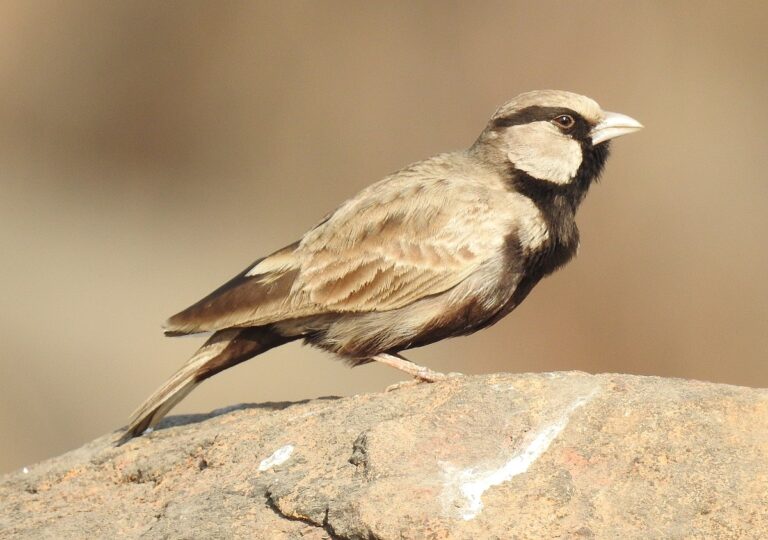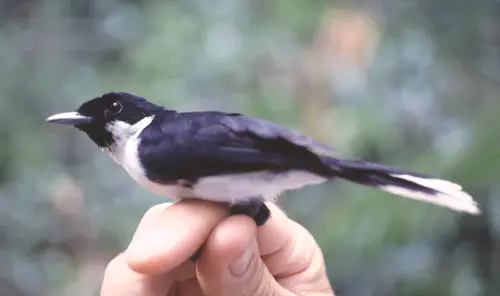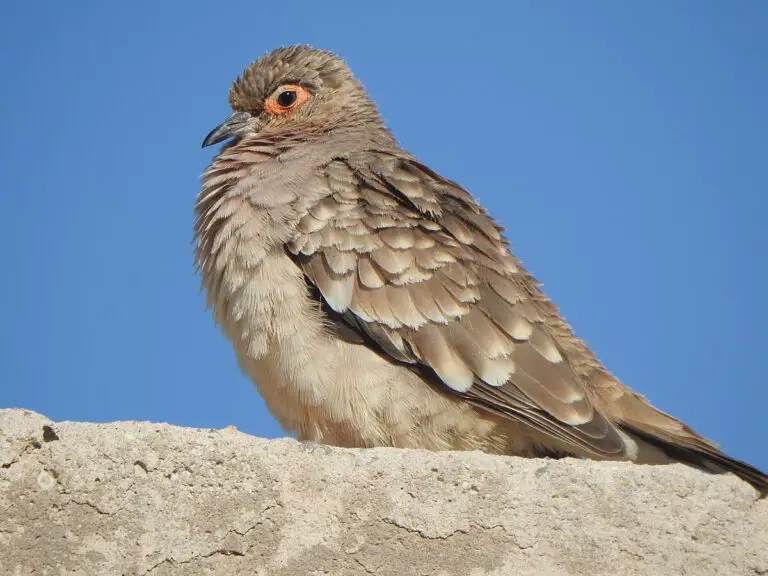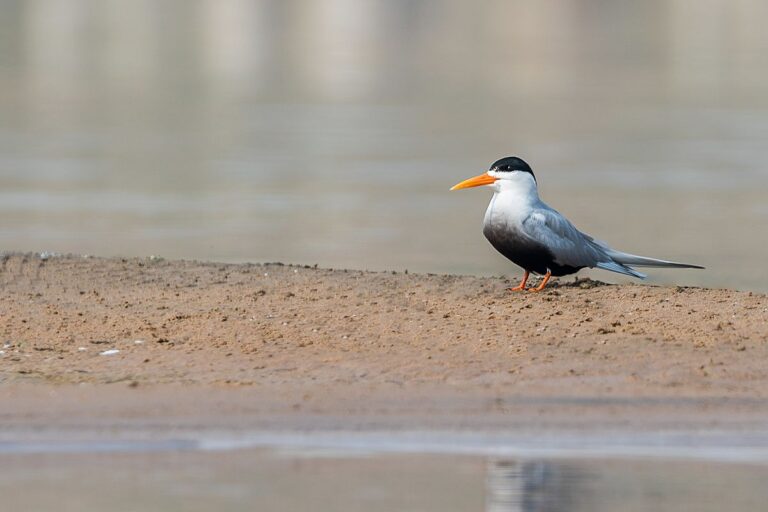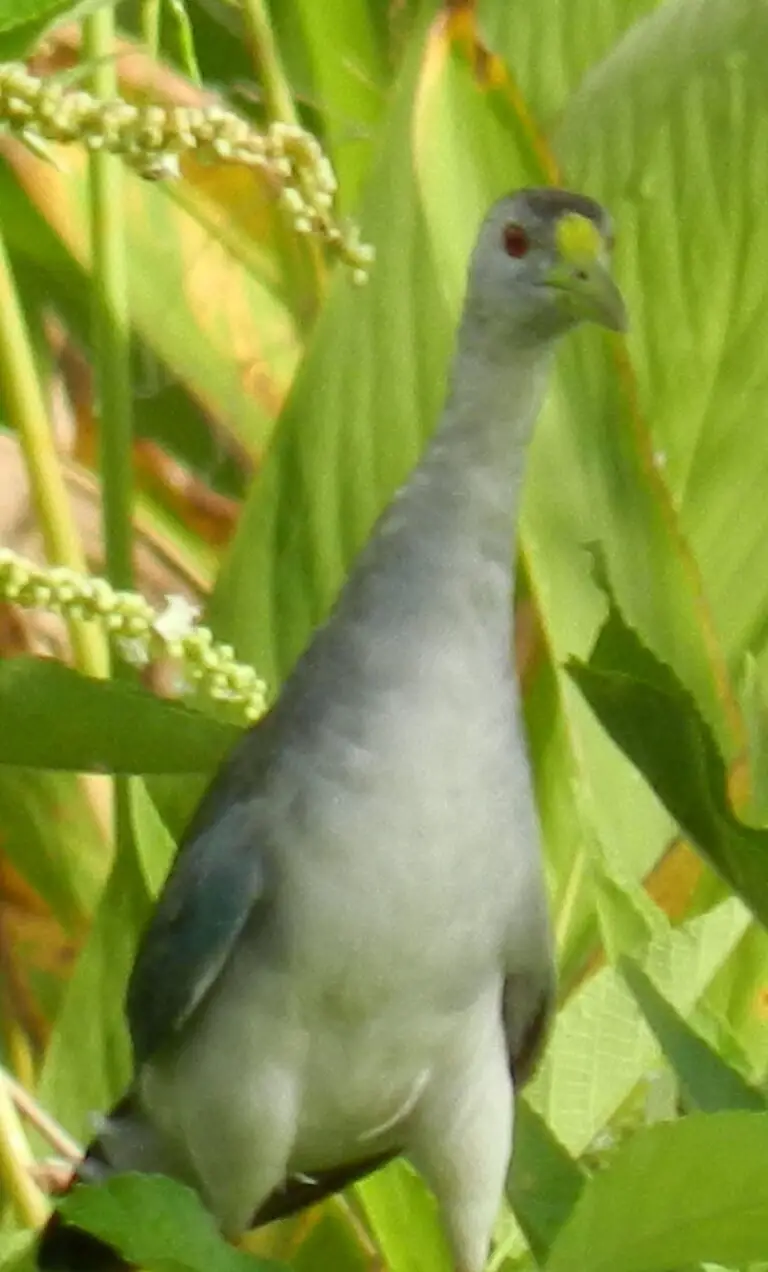Seagull (Larus argentatus)
“Some gulls are capable of using tools”
Seagulls belong to the following scientific classification:
- Kingdom: Animalia
- Phylum: Chordata
- Class: Aves
- Order: Charadriiformes
- Family: Laridae
- Genus: Larus
- Scientific Name: Larus argentatus
Their conservation status is listed as “Least Concern.”
Seagulls are found in various locations across the globe, including Africa, Antarctica, Asia, Central America, Eurasia, Europe, North America, Oceania, and South America. Their wide distribution reflects their adaptability to diverse environments.
Seagulls exhibit a diverse array of characteristics and behaviors:
- Prey: Seagulls are opportunistic feeders, consuming a variety of prey including fish, insects, earthworms, rodents, reptiles, amphibians, and other birds.
- Fun Fact: Some gull species demonstrate remarkable intelligence, with the ability to use tools in their foraging behaviors.
- Estimated Population Size: Seagulls are found in vast numbers, with populations numbering in the millions worldwide.
- Biggest Threat: Overfishing and climate change pose significant threats to seagull populations and their habitats.
- Most Distinctive Feature: Seagulls are characterized by their long bills, which are often hooked at the end, aiding in capturing prey.
- Other Name(s): Seagulls are sometimes referred to as “mews.”
- Wingspan: Seagulls boast impressive wingspans, reaching up to 67 inches.
- Incubation Period: Seagull eggs typically hatch after about one month of incubation.
- Habitat: Seagulls are commonly found along coasts and beaches, though they may also inhabit inland areas.
- Predators: Seagull eggs and young are preyed upon by raccoons, cats, foxes, minks, and various birds of prey.
- Diet: Seagulls are carnivorous birds, feeding primarily on animal matter.
- Type: Seagulls are classified as birds.
- Common Name: Seagull is the common name for these avian species.
- Number Of Species: There are multiple species of seagulls, though the exact number may vary.
- Average Clutch Size: Seagulls typically lay clutches of around two eggs.
- Nesting Location: Seagulls nest on the ground and cliff sites, often in colonies.
- Age of Molting: Seagulls undergo molting at around one to two months of age.
- Migratory: Many seagull species are migratory, traveling significant distances between breeding and wintering grounds.
In terms of physical characteristics:
- Color: Seagulls can display a variety of colors including brown, grey, yellow, red, black, and white.
- Lifespan: Seagulls can live for up to 49 years, depending on species and environmental factors.
- Weight: Seagulls typically weigh between four ounces to four pounds.
- Height: Seagulls range in height from 11 to 30 inches, with larger species reaching the upper end of this range.
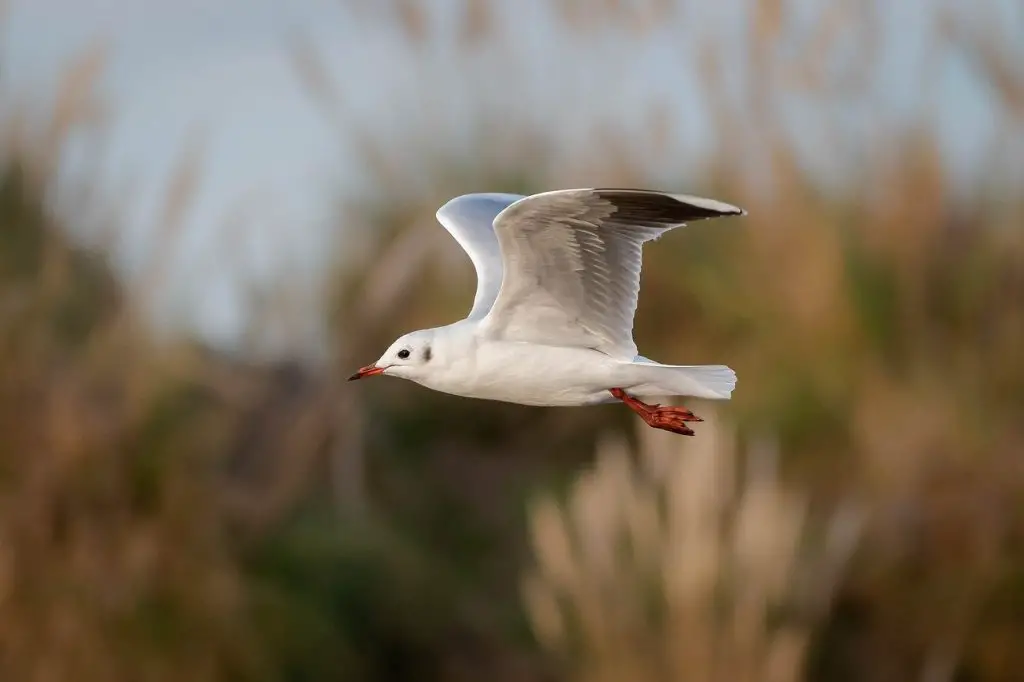
Seagulls hold a special significance in traditional Native American cultures, symbolizing versatility and freedom. These birds, belonging to a family that thrives near coastal regions, are renowned for their tenacity and cunning in foraging. With over 50 documented species found worldwide, seagulls exhibit remarkable diversity across their family.
While the European herring gull and the American herring gull are among the most recognizable species, the seagull family encompasses a wide array of variations in appearance and behavior. In this article, we’ll explore fascinating facts about seagulls, including their distinct characteristics, behaviors, and dietary habits.
Seagull vs. Eagle
While seagulls may bear some superficial resemblance to eagles, such as a large body and a hooked bill, they are not typically classified as birds of prey. Instead, seagulls are more closely related to auks, plovers, and other shorebirds. In contrast, eagles belong to a different taxonomic group and are more closely related to kites and vultures. Despite these similarities in appearance, seagulls and eagles occupy distinct ecological niches and exhibit different behaviors and feeding habits.
3 Incredible Seagull Facts!
Seagulls are renowned for their remarkable intelligence, ranking among the most intelligent birds in the world. Their cognitive abilities are evident in various ingenious foraging behaviors. For instance, some gulls exhibit tool use by dropping mollusk shells onto rocks to crack them open, while others have been observed baiting fish with bread. Perhaps most impressively, seagulls can learn and remember new foraging strategies, passing them down to subsequent generations.
One of the seagull’s remarkable adaptations is its ability to drink both freshwater and saltwater. This feat is made possible by a specialized gland located above the eyes, which collects and expels excess salt through the nostrils, enabling seagulls to maintain proper hydration regardless of their environment’s salinity.
Seagulls possess a unique anatomical feature—a small claw halfway up their lower leg. This claw serves as an anchor, allowing seagulls to roost securely on high ledges without the risk of falling off. This adaptation enhances their ability to rest and seek refuge in elevated locations, contributing to their versatility and survival in diverse habitats.
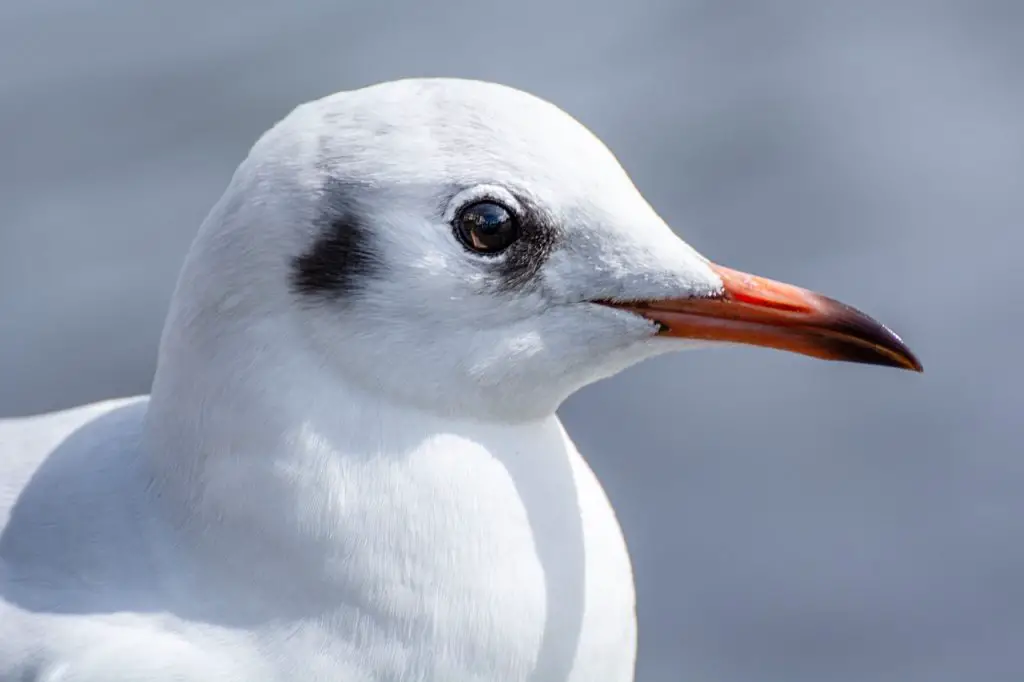
Where to Find the Seagull
Seagulls are predominantly found in coastal habitats worldwide, with a notable concentration in the Northern Hemisphere. While some species may venture far inland during the non-breeding season, the majority of seagulls remain closely associated with oceanic environments throughout their lives. Their affinity for coastal habitats reflects their reliance on marine resources for feeding and nesting, making these areas essential for their survival and reproductive success. Despite occasional inland excursions, seagulls maintain a strong connection to the ocean, where they exhibit a wide range of behaviors and adaptations suited to their marine lifestyle.
Seagulls exhibit a remarkable global distribution, inhabiting every continent, including Antarctica and the Arctic. While they typically favor coastal plains, they can also be found on small islands near coastlines, where they often form large colonies. While they are less commonly found in tropical regions, seagulls are adaptable and can be observed in such areas as well.
The primary determinant of seagull distribution is the availability of food. As opportunistic feeders, seagulls closely track their food sources, leading them to follow fishing endeavors conducted by humans. Consequently, human activities play a significant role in shaping seagull distribution and population density, as these birds capitalize on the abundance of food resources provided by human fishing practices. This close association with human activities underscores the adaptability and opportunistic nature of seagulls in exploiting available resources to ensure their survival and reproductive success across diverse habitats worldwide.
Nests
Most seagulls exhibit a nesting behavior characterized by building their nests in hollow depressions on the ground, with some species also nesting on cliffs. These nests are typically constructed using a variety of materials, including vegetation, feathers, rope, and even plastic debris. Seagulls strategically choose the location of their nests, often situating them next to rocks, logs, or bushes to provide protection from predators.
This nesting strategy reflects the adaptability and resourcefulness of seagulls in utilizing available materials and environmental features to create safe and secure nesting sites for their offspring. Despite the diverse range of materials used in nest construction, the primary goal remains consistent: to provide a sheltered environment conducive to successful incubation and rearing of young seagulls.
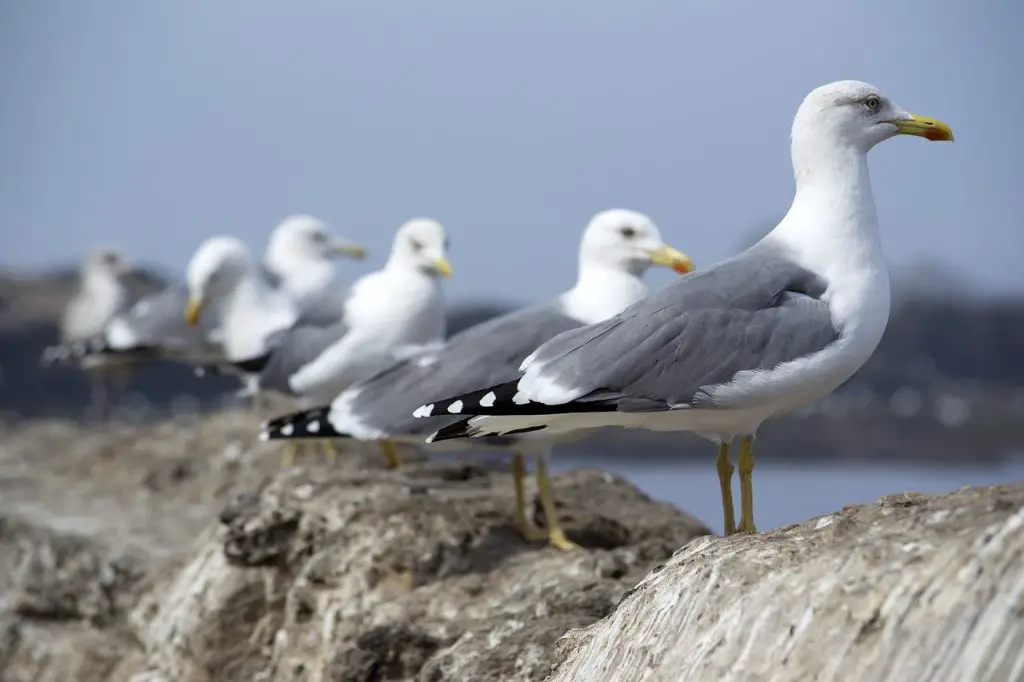
Evolution and Origins
Gulls belong to the extensive family of seabirds known as Laridae, encompassing an impressive diversity of 22 genera and approximately 100 species. Within this family, gulls share kinship with other notable seabirds such as kittiwakes, terns, and skimmers. Interestingly, the evolutionary history of Laridae traces back to the ancient Cretaceous Period, between 66 to 145 million years ago. During this era, Laridae was part of the ancestral lineage that would eventually give rise to auks and skuas. Although gulls diverged from this branch during the Cretaceous, they remain distant relatives to these birds.
The process of diversification within the Laridae family commenced during the Paleocene epoch, approximately 60 million years ago, marking the emergence of distinct gull species. Evidence of Laridae presence has also been identified in earlier stages of the Oligocene era, dating back to around 30 to 33 million years ago, further highlighting their ancient lineage.
Moreover, fossil records indicate the existence of gull-related species dating back to the Miocene epoch, approximately 23 to 5.3 million years ago. Remarkably, these fossils have been unearthed in France, providing valuable insights into the evolutionary history and geographic distribution of gulls throughout the ages. Thus, the evolutionary journey of gulls spans millions of years, reflecting their enduring presence and adaptation to diverse environmental conditions over geological time scales.
Types
Gulls, with their diverse species and distinctive characteristics, inhabit various regions around the world. Here are some notable examples:
- California Gull (Larus californicus): Found in lakes and marshes across Canada to Colorado, these gulls are known for their interactions with beachgoers, often approaching humans in search of food.
- Dolphin Gull (Leucophaeus scoresbii): Recognizable by their mottled head feathers and reddish beak, Dolphin Gulls form colonies in Argentina and Chile, nesting on cliffs or sandy beaches.
- Herring Gull (Larus argentatus): Widely distributed across Europe, particularly in Britain, Iceland, and Ireland, Herring Gulls exhibit an omnivorous diet, including crustaceans, fish, and even food obtained from humans.
- Pacific Gull (Larus pacificus): Native to Australia, these large gulls boast a distinct appearance with a white head, orange-reddish beak, and dark wing and back feathers. They primarily feed on crustaceans and are skilled at stealing food from other birds.
- Ivory Gull (Pagophila eburnea): Resembling a small pigeon, Ivory Gulls are characterized by their snow-white plumage and blue-yellow-tipped beak. They breed in North America, Greenland, and Eurasia.
- Black-headed Gull (Chroicocephalus ridibundus): Known for their black head feathers, which turn white in winter, Black-headed Gulls are widespread across Europe, Canada, China, and Japan. They exhibit unique nesting behavior, removing eggshells from their nests after their young hatch.
- Black-billed Gull (Chroicocephalus bulleri): Found exclusively in New Zealand, these gulls are notable for their black bill, predominantly snow-white plumage, and legs that transition from black to red during mating season.
- Ring-billed Gull (Larus delawarensis): Breeding in North America and Canada, Ring-billed Gulls are identifiable by their short yellow beak with a black band, silver wings, and white head, neck, and chest feathers.
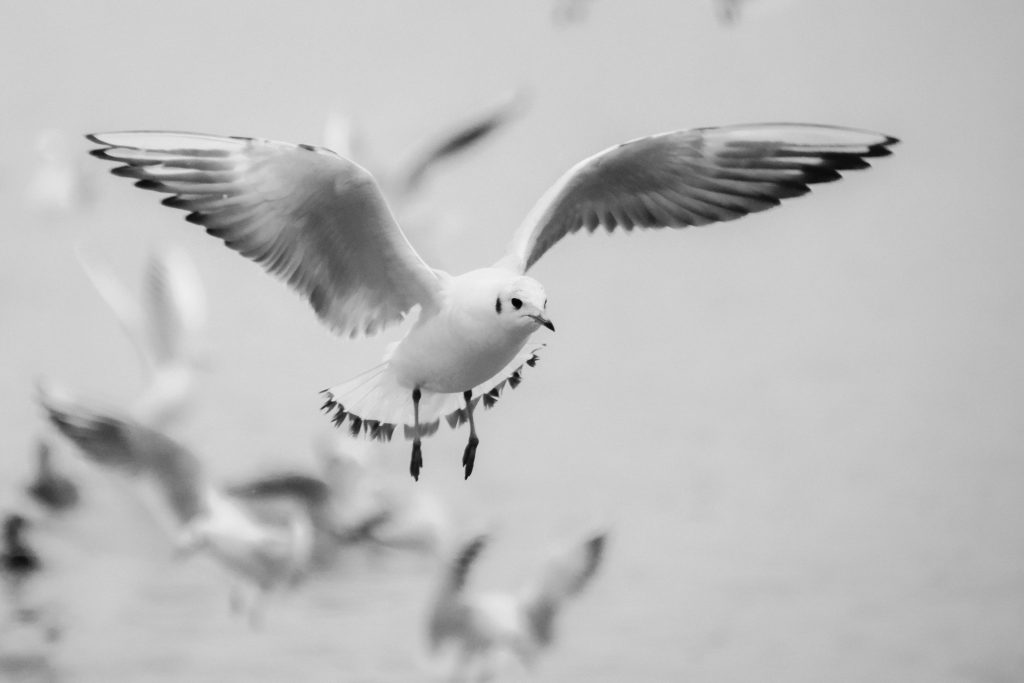
Each of these gull species contributes to the rich tapestry of avian biodiversity, adapting to diverse habitats and exhibiting unique behaviors reflective of their respective environments.
Size, Appearance, and Behavior
Seagulls possess distinctive physical characteristics that make them easily identifiable. Their large, bulky bodies are supported by sinewy legs, complemented by long wings and stout bills that terminate in a distinctive hook. Their plumage typically consists of shades of white, gray, and sometimes black, with variations in head color among different species. While American and European herring gulls exhibit white heads, others like Franklin’s gull, little gull, and swallow-tailed gull display black heads. During winter, head plumage may transition to mottled gray or white, depending on the species. Seagulls vary in size, ranging from 11 to 30 inches from head to tail, depending on the species.
These seabirds are known to inhabit loose, scattered colonies along coastlines, ranging from small groups to large congregations of thousands of individuals. Breeding pairs typically maintain their own territories and defend them against intruders, though they may gather in groups for hunting and foraging activities. Foraging trips are characterized by constant motion and noise, with each bird primarily responsible for sourcing its own food. Seagulls are opportunistic feeders and often steal food from other animals and even from each other.
Communication among seagulls is facilitated through various distinct calls, which serve to express aggression, identify potential mating partners, warn the colony of threats, and resolve territorial disputes. Additionally, baby chicks employ begging behaviors to solicit food from their parents, further emphasizing the intricate social dynamics within seagull colonies.
Migration Pattern and Timing
Migration is a common behavior among most species of gulls, particularly during the winter months. While some gulls undertake relatively short journeys spanning just a few miles to seek out optimal foraging grounds, others embark on extensive migrations covering thousands of miles.
Among these migratory species, Franklin’s gull stands out for its remarkable journey from Canada to South America each year. This migration is one of the longest undertaken by any gull species, spanning vast distances to reach its wintering grounds in South America. This annual migration underscores the incredible navigational abilities and endurance of these birds, as they traverse diverse landscapes and navigate challenging environmental conditions to reach their destination.
Overall, migration plays a crucial role in the life cycle of gulls, enabling them to access abundant food resources and suitable breeding grounds throughout the year. Through these impressive journeys, gulls demonstrate their adaptability and resilience in responding to changing environmental conditions and maintaining their populations across vast geographical ranges.
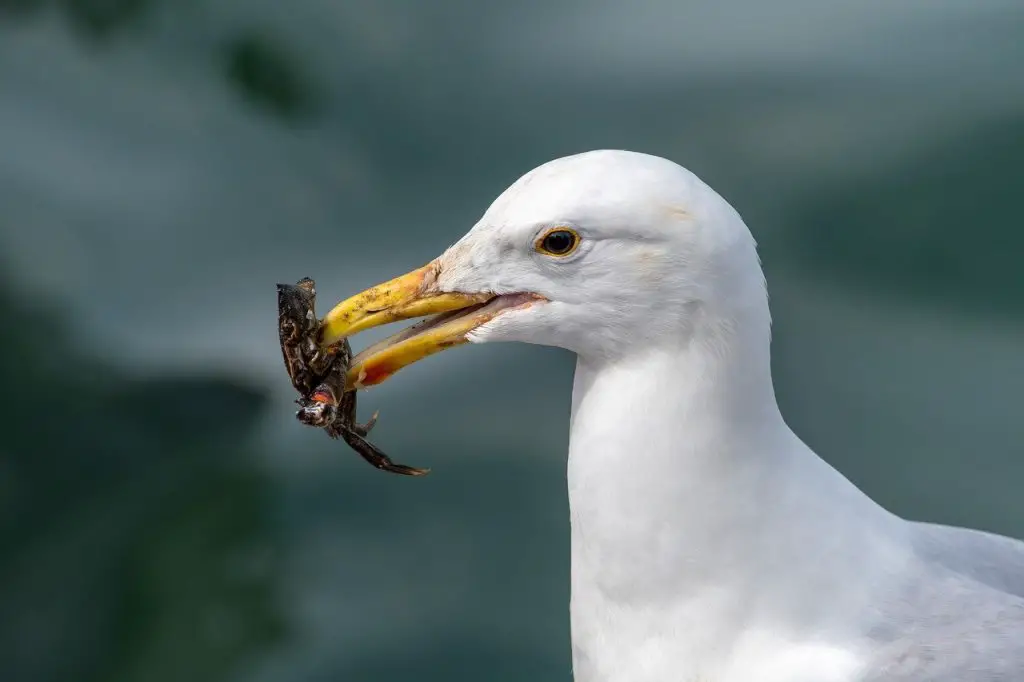
Diet
Seagulls primarily adhere to a carnivorous diet, with occasional supplementation from plant matter. Their feeding behavior is characterized by opportunistic scavenging, as they forage for food on the surface of the ocean, beaches, or land. These bold and resourceful birds are known to seize food directly from the hands of humans, showcasing their adaptability and willingness to exploit various food sources.
Their scavenging habits often lead them to coastal areas, where they capitalize on the abundance of marine life and human activity. While their diet primarily consists of prey items such as fish, crustaceans, and small marine animals, seagulls may also consume scraps of plant material when available.
Overall, seagulls exhibit versatile feeding behaviors that enable them to thrive in diverse coastal environments, where they play an important role in maintaining ecological balance by scavenging and consuming organic matter.
What does the seagull eat?
Seagulls exhibit a diverse diet, consuming a wide range of foods to sustain their nutritional needs. Their menu typically includes:
- Fish: Seagulls prey on various species of fish, such as herring, mackerel, and anchovies, which they capture near the water’s surface or snatch from the hands of fishermen.
- Insects: Flying insects like flies, mosquitoes, and beetles are readily consumed by seagulls, either in flight or when they land on the ground.
- Earthworms: Seagulls feed on earthworms, often found in moist soil or near bodies of water.
- Mollusks: Mussels, clams, and other shellfish are a common prey item for seagulls, which they crack open with their stout bills.
- Rodents: Small rodents like mice and voles may fall victim to opportunistic seagulls hunting in grassy areas or near human settlements.
- Reptiles and amphibians: Seagulls may prey on small reptiles such as lizards and amphibians like frogs and tadpoles.
- Fruits and seeds: While not a primary component of their diet, seagulls may consume fruits and seeds opportunistically, particularly in urban environments where human food waste is abundant.
- Other birds and their eggs: Seagulls are known to raid the nests of other bird species, consuming both eggs and nestlings.
Seagulls employ various hunting strategies to obtain their prey, including patrolling scavenging sites on land or flying high in the air to dive down and snatch prey from the water’s surface. However, they are not equipped to dive deep below the ocean’s surface for food.
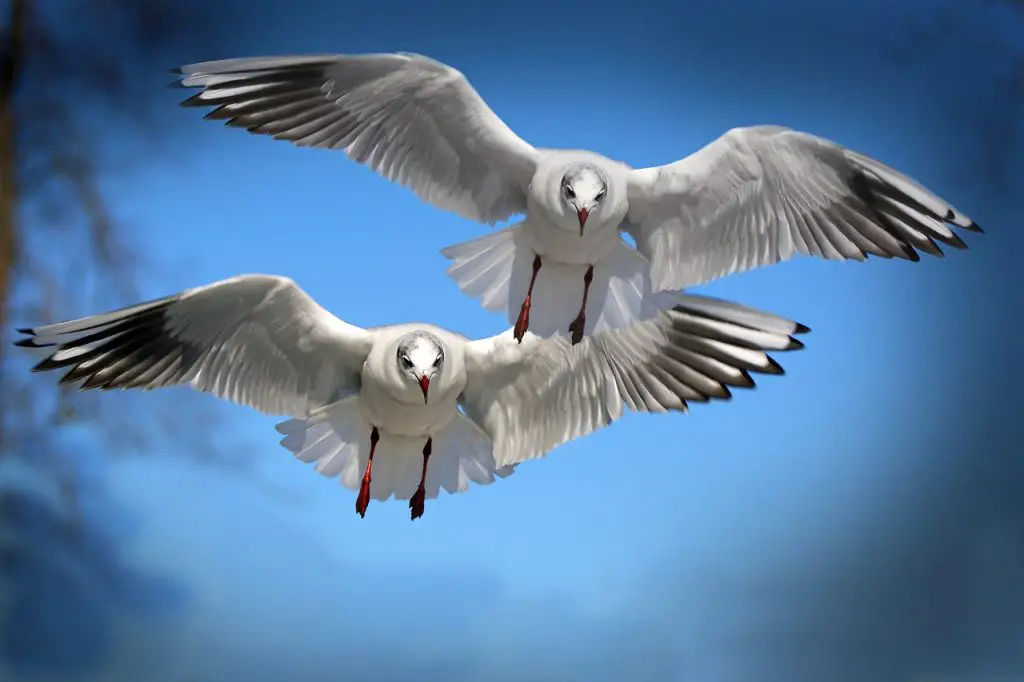
Predators, Threats, and Conservation Status
Seagulls are renowned for their remarkable adaptability and versatility, enabling them to thrive in diverse environments worldwide. While the majority of seagull species are classified as species of least concern by the IUCN Red List, indicating stable populations and minimal conservation concern, some species such as the lava gull and kittiwake face heightened threats to their survival and are classified as vulnerable to extinction.
Various factors contribute to the vulnerability of certain seagull species, including:
- Climate change: Alterations in temperature patterns, sea level rise, and changing weather conditions can disrupt breeding and foraging habitats, affecting seagull populations.
- Pollution: Pollution of marine and coastal environments, including plastic debris, oil spills, and chemical contaminants, can directly impact seagulls by affecting food sources, causing habitat degradation, and posing health risks.
- Loss of coastal habitat: Coastal development, habitat destruction, and urbanization contribute to the loss of nesting and foraging sites critical for seagull survival.
- Overfishing: Declines in fish populations due to overfishing can reduce prey availability for seagulls, affecting their reproductive success and overall population dynamics.
- Deliberate hunting: In some regions, seagulls are subjected to deliberate hunting or persecution, either for sport, pest control, or traditional practices, leading to population declines and localized extirpations.
Addressing these threats requires coordinated conservation efforts focused on habitat protection, pollution mitigation, sustainable fisheries management, and raising awareness about the ecological importance of seagulls. By addressing these challenges, we can work towards ensuring the continued survival and well-being of seagull populations for future generations.
What eats the seagull?
The vulnerability of baby seagulls and their eggs to predation is a natural aspect of their life cycle. Various predators, including raccoons, minks, foxes, cats, and birds of prey, pose significant threats to seagull nests and their young. These predators capitalize on the accessibility of nests located on the ground or cliffs, making them susceptible to attacks.
Although adult seagulls are less vulnerable to predation due to their size and agility, they may still fall prey to particularly large or formidable predators. In such cases, groups of seagulls often exhibit a defensive behavior known as mobbing, where they collectively converge on the predator to drive it away. During mobbing, seagulls aggressively strike the predator with their wings and feet, utilizing their numbers and coordinated efforts to intimidate and deter the threat.
This defensive behavior serves to protect both the nests and the adult seagulls themselves from potential harm. By working together, seagulls increase their chances of successfully repelling predators and safeguarding their offspring, thereby ensuring the continued survival of their populations.
Reproduction, Young, and Molting
During the early spring, as seagulls return to their breeding sites after their annual migration, they embark on their reproductive season. Known for their monogamous mating behavior, seagulls often form lifelong pair bonds, solidifying their relationships through mutual feeding rituals. Once paired, the female lays a clutch of up to three eggs per breeding season.
Both parents share the responsibility of incubating the eggs, taking turns to keep them warm for about a month while the other partner forages for food. After hatching, the parents continue to diligently feed and care for their chicks until they develop their full set of flight feathers, typically within a month or two.
Juvenile seagulls display a mottled brown appearance, distinct from the more uniform colors of adult plumage. It takes several years for young seagulls to reach full sexual maturity and acquire the characteristic coloring of adults. Remarkably, seagulls have long lifespans, with many species capable of living up to 30 years or more. In fact, the oldest documented seagull specimen was an impressive 49-year-old white-headed gull, underscoring the resilience and longevity of these remarkable birds.
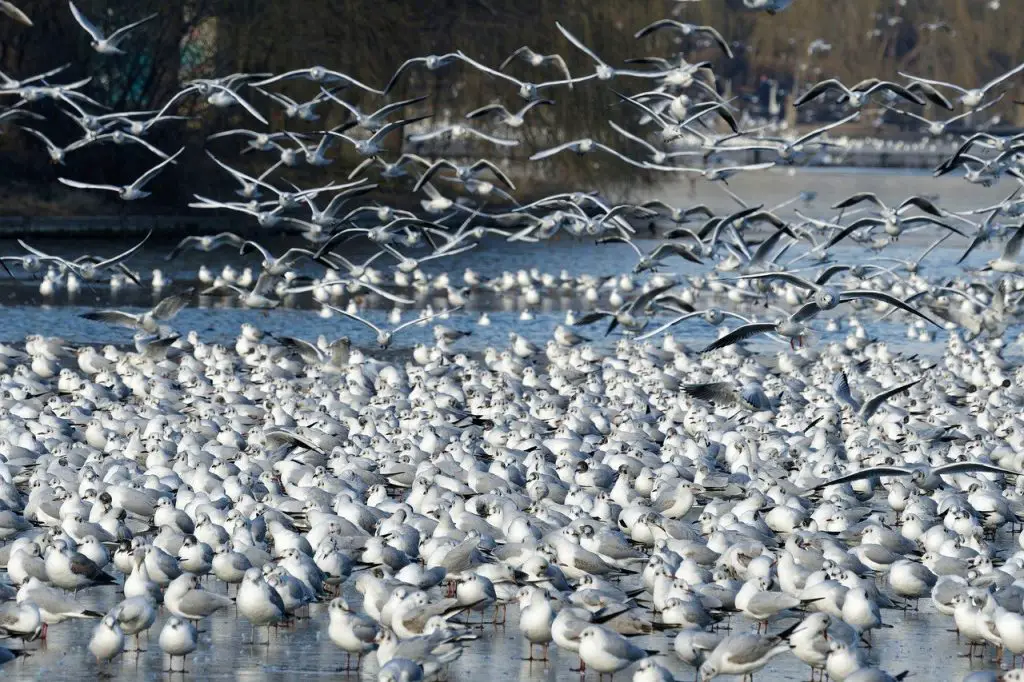
Population
The decline in seagull populations is a concerning trend observed across various species, with notable decreases in numbers documented over recent decades. For instance, the American herring gull, once abundant, has experienced a significant decline, with its population estimated to have plummeted by 83% between 1966 and 2015.
Despite the decline, seagulls remain widespread across the globe, with millions of individuals representing diverse species found in various habitats worldwide. Among the numerous species of gulls, each possesses unique characteristics and adaptations suited to its specific environment and ecological niche.
Here are some of the diverse gull species found globally:
- Audouin’s Gull
- Andean Gull
- Armenian Gull
- Belcher’s Gull
- Black-tailed Gull
- Common Gull
- Gray Gull
- Iceland Gull
- Little Gull
- Hartlaub’s Gull
- Lava Gull
- Saunders’s Gull
- Sooty Gull
- Olrog’s Gull
- Laughing Gull
- Western Gull
- Yellow-legged Gull
- Lesser Black-backed Gull
- Great Black-backed Gull
- Silver Gull
- Kelp Gull
- Heermann’s Gull
- Bonaparte’s Gull
- Glaucous-winged Gull
- Short-billed Gull
- Franklin’s Gull
- Black-legged Kittiwake
- Caspian Gull
- Glaucous Gull
- Mediterranean Gull
- Brown-hooded Gull
- Grey-hooded Gull
- Slender-billed Gull
- Yellow-footed Gull
- Pallas’s Gull
- Sabine’s Gull
- Slaty-backed Gull
- Swallow-tailed Gull
- Brown-headed Gull
- White-eyed Gull
- Ross’s Gull
- Relict Gull
- Red-legged Kittiwake
Despite their diversity, many gull species face similar threats to their survival, including habitat loss, pollution, climate change, and overexploitation of resources. Conservation efforts aimed at addressing these threats are crucial for safeguarding the continued existence of these iconic seabirds and maintaining the ecological balance of coastal ecosystems.
Before You Go…
Seagulls are highly adaptable and widespread birds, known for their versatility and resilience in various coastal habitats worldwide. Despite their significant decline in some populations, seagulls remain emblematic of coastal ecosystems, playing essential roles in marine food chains and ecological processes. With diverse species found across the globe, seagulls continue to captivate and intrigue both scientists and enthusiasts alike. Efforts to conserve seagull populations and their habitats are essential for ensuring their continued survival and the maintenance of healthy coastal ecosystems for generations to come.
